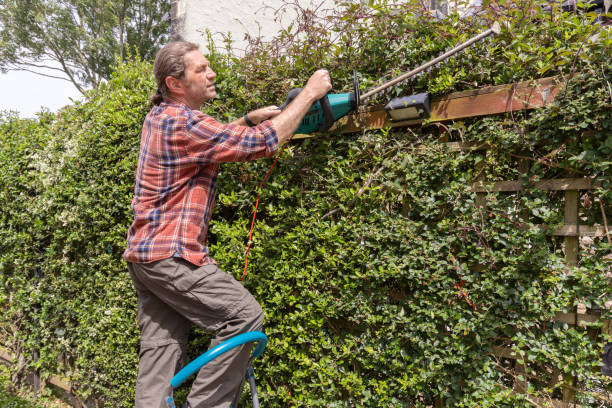You might think tree service is just about chopping down trees, but there’s so much more involved. It’s about nurturing your landscape through precise pruning and trimming, which can boost your trees’ health and structure—Have you ever considered how pests and diseases could silently affect your trees? Regular inspections and specific treatments can make a world of difference. And what about those unexpected storms? Tree service also includes emergency responses to prevent potential hazards. Are you curious how these practices contribute to a thriving and safe environment? There’s a lot more to uncover.
Pruning and Trimming
When it comes to maintaining the health and aesthetics of your trees, pruning, and trimming are essential practices. These techniques don’t just keep your trees looking good; they also promote healthy growth and prevent potential hazards. Pruning involves the selective removal of branches to improve the tree’s structure and encourage robust growth. On the other hand, you’ll find that trimming focuses more on cutting back overgrown branches to maintain a desired shape and size.
By removing dead or diseased branches, you’re helping your tree allocate its resources more efficiently, which can lead to more vigorous growth. Proper pruning can improve air circulation and sunlight penetration, which is crucial for a tree’s overall well-being. It’s not just about health, though. A well-pruned tree can enhance your property’s curb appeal, making your landscape more attractive.
Timing is crucial when it comes to pruning and trimming. Late winter or early spring, before new growth starts, is often the best time to prune most trees. However, some species have specific needs, so knowing your tree type is essential. Regular maintenance will ensure your trees thrive and remain an asset to your landscape.
Disease and Pest Management
Managing tree health isn’t just about pruning and trimming; disease and pest management play a crucial role too. You might overlook this aspect, but it’s essential for the longevity of your trees. Insects, fungi, and bacteria can wreak havoc if left unchecked, turning a healthy tree into a liability.
First off, regular inspections are key. By keeping an eye on your trees, you can catch issues early. Look for signs like discolored leaves, unusual growths, or insect activity. These could indicate a problem that needs immediate attention.
Knowing what you’re dealing with is half the battle regarding pests. Common culprits include aphids, borers, and caterpillars. Each requires a different management strategy, from insecticidal treatments to natural predators like ladybugs.
Diseases are another story. Fungal infections like root rot or powdery mildew can spread quickly. Proper sanitation and fungicides can help, but sometimes, removing the affected parts is the only solution.
Remember, healthy trees are more resilient. Proper watering, fertilizing, and mulching can strengthen trees, making them less susceptible to diseases and pests. So, take a proactive approach to ensure your trees thrive.
Emergency Storm Response
In the wake of a severe storm, quick and efficient emergency storm response is crucial to mitigate damage and ensure safety. When trees are downed or severely damaged, they pose immediate threats to your property and personal safety. Acting swiftly can prevent further damage and reduce the risk of injury.
First, assess the situation. Look out for leaning trees, broken branches, and downed power lines. Don’t try to handle large or dangerous tasks yourself. Professional tree service providers are trained to manage these risks safely. They have the equipment and expertise to remove fallen trees and debris without causing further harm.
Next, contact a reputable tree service company that offers emergency storm response. They’ll prioritize your call, understanding the urgency of the situation. Quick action not only safeguards your home but also helps restore normalcy faster.

